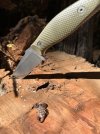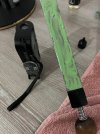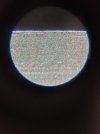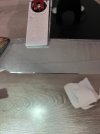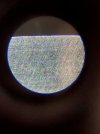Nice work! The TP test is a good one. What do you sharpen with?
I am curious though, as the part I quoted above has me scratching my head.
That is a very difficult-to-achieve miniscule amount of change in angle... (0.00087" lift of the spine per inch of blade height) I'd venture to guess it's well within the error of any sharpening system. Even if you meant 1/2 degree, it's still only about a human hair per inch of blade height. Please share.
I sharpen using a standard TSPROF sharpening machine.
Catching 0.1 degrees is extremely easy; the angle gauge literally shows it.
Achieving 0.05 degrees is also quite simple by calculating the number of turns needed on the machine to increase the angle by 0.1 degrees. I’ve gotten the hang of setting the angle to hit 0.05 degrees, ensuring I reach the cutting edge, especially on very soft stones, which work slowly. Often, when people sharpen, they fail to reach the cutting edge.
In reality, it’s not as complicated as you might think. I simply tighten the lifting mechanism, set the angle—for example, 22.5 degrees—then move to 22.6 degrees and make a few reverse turns of the lifting mechanism downward. This way, I don’t get a clean 22.5 degrees but something like 22.55 degrees. I’ve verified this with a more advanced angle gauge, and a microscope at 300x magnification also confirms that I’m hitting the cutting edge without creating a microbevel.
In text, it might seem complex, but in practice, it’s extremely simple. If you’ve sharpened enough times, you can do it easily.
P.S
The test would’ve been slightly better; I’m just not used to recording it on video, and when you test it without filming, it always turns out better.
Additionally, I didn’t wipe the cutting edge with a degreaser—it was even slightly oily after sharpening.
Plus, whenever you record a video to show “how great” something turns out, by all the laws of turning on a camera, it starts to go just a little bit worse.




